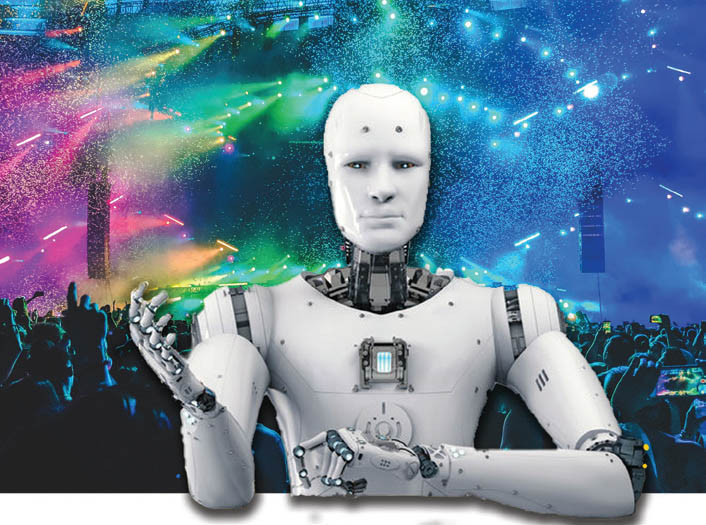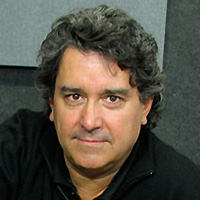The other day, while watching the Vienna Open tennis championship, I felt that something was amiss. Something just did not sit right.
First, I noticed that ball boys and girls (the young people who retrieve errant balls during matches) looked like they had tennis rackets in hand. After careful review, it turned out they had something that actually resembled a fishing net. Further, the usual count of six people had been culled down to three.
Further, the tennis court seemed clean – very clean. I realized that there were no line judges. The ATP (Association of Tennis Professionals, the governing body of the men’s professional league) decided to eliminate those tasks, instead assigning a computer make the calls. The league had been using computers for years to check for the occasional bad call, now the machine simply does all of the work.
Being an audio person, it didn’t take long for me to get tired of hearing the same voice say “out.” Note to the ATP: It would be an upgrade to have two or three vocal intonations, and/or perhaps a random mix of male and female voices.
Looking At The Patterns
In recent months, there’s been much controversy regarding artificial intelligence (AI), robotics, and how they may replace jobs currently handled by humans. In tennis, robots may have replaced the line judges, but they won’t replace the players. Not for some time anyway. (Remember the human versus computer chess matches?)
AI is basically a huge database that compares what’s happening in real-time with past history as a means to interpret the next best move. Ergo chess. The computer is able to look at all the patterns from years of play, and possible moves. Today’s processing speed enables AI to make decisions that almost approach that of the human brain.
Autonomous vehicles have been in use for some time, but they’re generally relegated to trucking ore from a mine to a loading dock, and in between, there’s nothing to damage. More recently, the technology has proven to be somewhat effective on highways when the conditions and speeds are predictable.
However, this changes in locations where unpredictable situations such as people jaywalking and stray dogs running after cars can introduce unknowns. AI can predict the outcome of a woman crossing the street with a stroller, but it gets confused when a German Shepherd is pulling a wagon.
Robots need AI to make decisions. Like autonomous driving vehicles, they are extremely well suited for repetitive tasks. The metal shops we used at Radial Engineering utilized robots that would load the raw steel into laser cutters, pull the sheets out, and then bend them. These machines can run 24 hours, seven days a week with a low labor component. This process enabled us to produce metal boxes in Canada instead of going offshore.
The first time I went to China, I was amazed at the roads that were recently built. Beautiful highways, void of cars, in preparation for the future. Factories (“sweat shops” in reality) of all kinds permeated the landscape while the air was so thick and polluted – you couldn’t not see the sun on a clear day.
In a matter of only a few years, manufacturers came to the realization that retaining well trained staff not only increases productivity, it reduces defects. This pushed salaries up along with demands for a better lifestyle. Today, China is embracing AI and robotics as a means of keeping costs down so that they don’t lose out to other markets, such as those in Vietnam and Bangladesh. Those clear highways are now clogged with cars.
Closer To Home
It makes one wonder whether these new technologies will have any effect on the world of professional audio. When you think about it, it’s the close interaction between musicians and audio engineers that really makes shows happen.
Can AI assist a front of house engineer (FOH) to EQ and/or set levels in a room? Certainly. But AI cannot predict a song change or jam session – or heaven forbid – an artist that is out of sorts because the promoter delivered the wrong brand of champagne! In fact, it’s both the unpredictability of a concert and the vibe between players that often makes it memorable.
Back in the 1980s when I was with Fender, I recall buying a block of 50 tickets for a Rolling Stones concert so that our staff could all sit together and enjoy the show. I left after four songs. What I saw on stage looked and acted like a bunch of robots with no vibe whatsoever. It just wasn’t working.
But after reading Keith Richards’ book (Life), it became clear: This was the band’s first concert together after many years of distance, and further, Mick Jagger and Keith Richards still weren’t on speaking terms. Being on the stage together was a forced situation, and it sounded like it. Years later, I would see the Stones again and enjoyed what was one of the best concerts I’ve ever attended. They had reconciled.
Pearl Jam has a dedicated channel on XM Radio that enables superfans to hear concerts from around the globe. Because their shows have a major jam component, every show is different. The differences make things interesting.
As they say: Play a wrong note once and it’s a mistake. Play the same wrong note four times and it becomes jazz.















